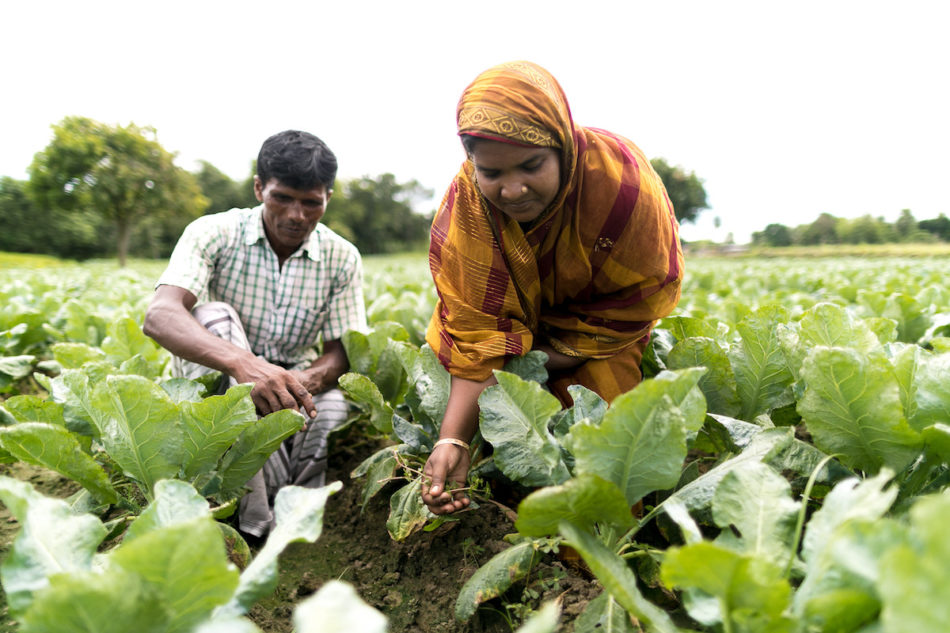What is development? Many of us may associate development solely with industrial and infrastructural developments. However, propelling the agricultural sector is equally important for a sustainable economy. Surprisingly, Bangladesh has become able to maintain an agriculture-led economic expansion in a commendable way. Prioritizing the non-traditional human security issues, Bangladesh has been showing admirable performance in food and nutrition security. Gilbert F Houngbo, the newly reappointed sixth president of the International Fund for Agricultural Development (IFAD), a specialized UN Agency, applauded the country saying it as “a glaring example” for the developing nations.
The posture of Bangladesh has dramatically shifted from a “basket case” to that of a “development surprise”. The economy of the country has been booming throughout the last decades and, even amid the Covid-19 pandemic, Bangladesh is one of the few countries that was able to maintain a positive economic growth rate.
The economy of Bangladesh is based on three sectors-agriculture, industry and services. Bangladesh has achieved Millennium Development Goals (MDGs) in alleviating extreme poverty and hunger. With advanced research and development, efficient agricultural policy and government subsidies, Bangladesh has managed to set an example for South Asia.
Government initiatives including the “Ektee Bari Ektee Khamar” (EBEK) project, 10-taka bank account facilities and the availability of loans for the farmers-contributed to the capacity building of the agricultural grassroots and thus, played an important role in the rural economy. To maintain the agricultural development and to meet the challenges of Covid-19, the government of Bangladesh allocated $2 billion to the Ministry of Agriculture and the Ministry of Fisheries and Livestock for the 2021-22 fiscal year. Of the total allocation, subsidies in the agricultural sector have been increased to $1.2 billion. To ensure food security, $699.69 million is allocated for food subsidies through various kinds of stimulus packages and food assistance programs.
Under the unique project of EBEK, over 21.8 million poor and extreme poor people across the country are getting benefits. In September of 2010, Bangladesh Bank instructed public banks to help the abject poor in opening accounts at only BDT 10-taka, which is $0.11 dollars, so that they can get the benefits of the safety net programs. Farmers can easily apply for loans through the Union Digital Center (UDC) or through mobile banking. As of December 2020, a total of 9.72 million 10-taka accounts were created and people deposited $43.70 million. The Bangladesh government has taken these initiatives to provide its best service to the poor farmers so that they can have easy access to ICT for agro-based loans with the help of modern technology.
Bangladesh has made effective and sustainable gains in agriculture mainly through government policy support and the enterprising role and contribution of its farmers. Its agricultural efficiency is well manifested in the exemplary success in food production and efficient supply and distribution.
To make a comparative analysis, the agricultural sector of neighboring India seems fragile, one which leads to frequent farmer protests and peasant suicides. The Modi government is often criticized for serving the interest of corporatism, privatization and the free market rather than serving the interests of the farmers. India should learn from Bangladesh and keep in mind that “agriculture keeps us alive”. While the Modi regime is not paying heed to the demands of the farmers, its smaller neighbor can be taken as a role model in the agricultural sector.
* Nazifa Nawar is a researcher and columnist based in Dhaka, Bangladesh.
July 17. 2022
The viewpoints expressed by the authors do not necessarily reflect the opinions, viewpoints and editorial policies of Aequitas Review.

